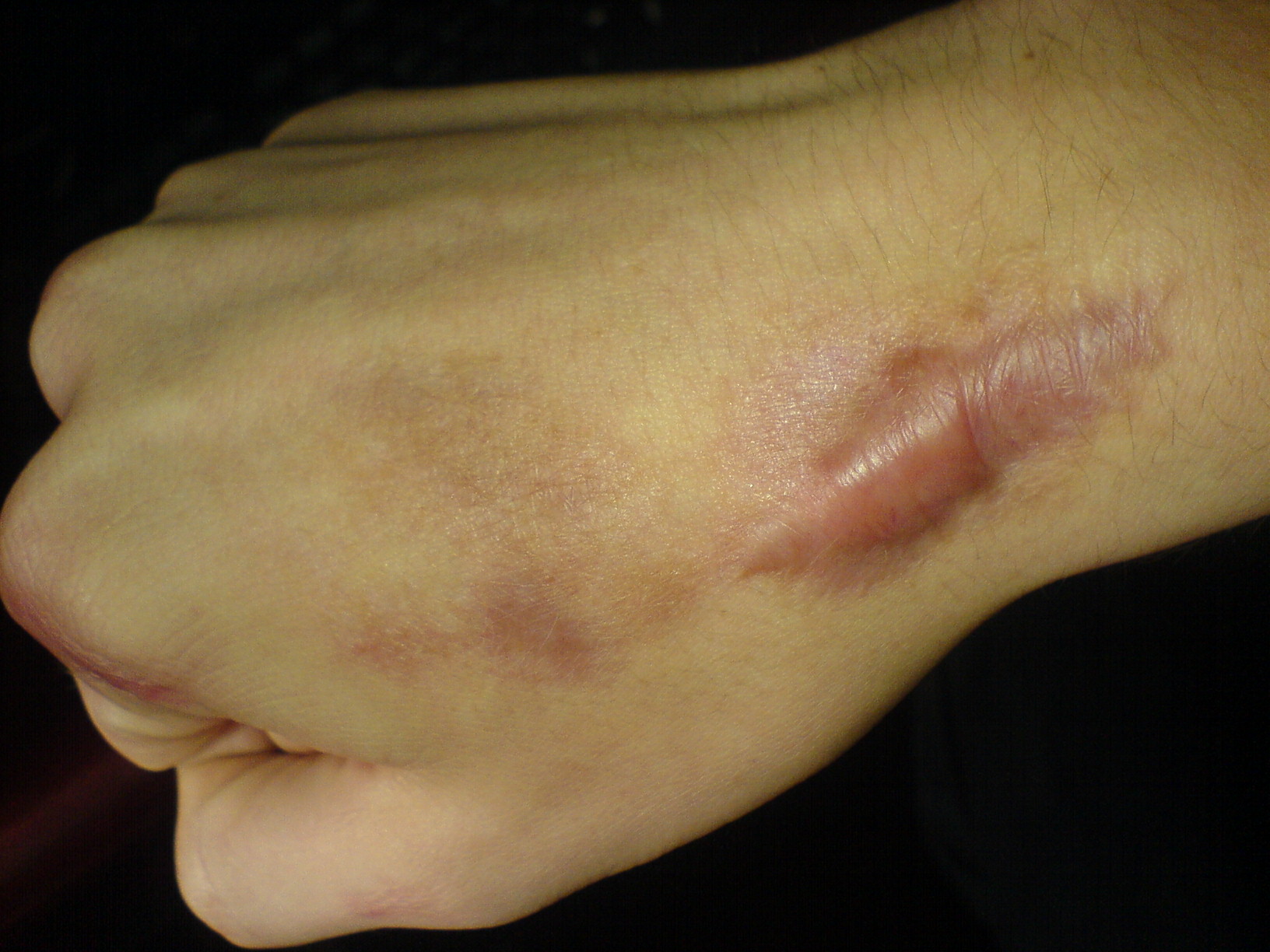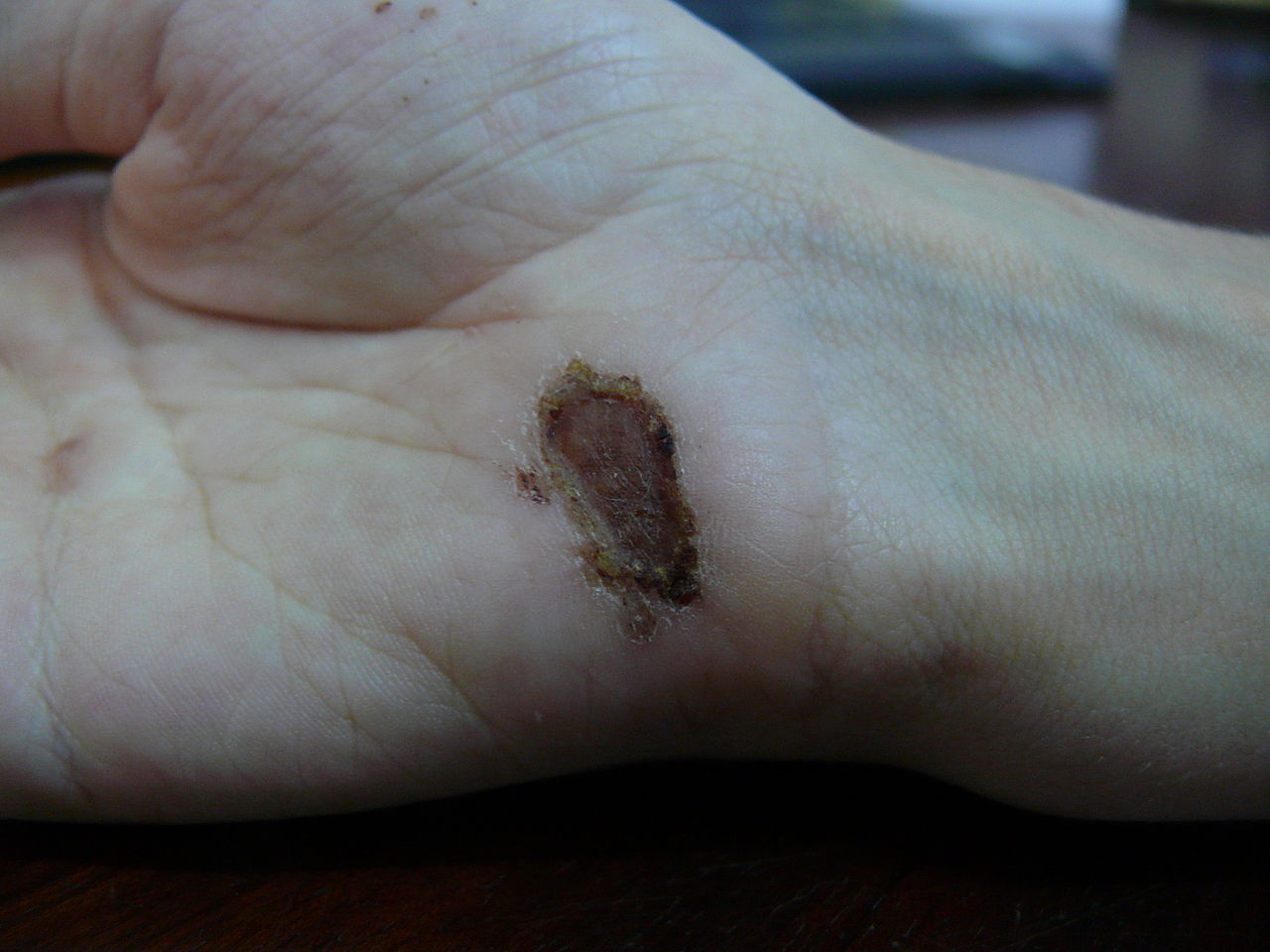Playlist
Show Playlist
Hide Playlist
Inflammation and Repair by Scarring – Parenchymal Regeneration
-
Slides Acute and Chronic Inflammation Regenerate Parenchyma.pdf
-
Reference List Pathology.pdf
-
Download Lecture Overview
00:01 Okay, let's look at the other end of the spectrum. 00:05 Let's say we can't regenerate. 00:06 Okay, we're starting at the same point. 00:08 So the green arrow is exactly at the same point, as before, when we were looking at regeneration. 00:13 But in this case, we have certain conditions where we cannot get regeneration, and we're going to make scar. 00:20 So they're going to be a couple of additional steps in there, including the formation of granulation tissue, that's the neovascularization, that's angiogenesis. 00:29 And that's going to provide the provisional matrix and railroad tracks. 00:34 so we can bring in fibroblasts that can lay down collagen, and extracellular matrix to make a scar. 00:40 Starting at the green arrow. 00:43 So this is scarring. 00:45 It's the other end of the spectrum from that perfect regeneration. 00:49 This occurs when there is extensive damage, when we have lost the blueprint for putting the tissue back together. 00:56 An abscess would be a perfect example, where there's been so much death and destruction, that we have lost the blueprint to put the tissue back together. 01:06 It happens when there are permanent cells. 01:08 So we talked about labile cells and stable cells. 01:11 Now permanent cells, what are those? Well, those are cells that are terminally differentiated, that cannot replicate. 01:18 And these include cardiomyocytes, heart muscle cells, and neurons. 01:23 So permanent cells when they are killed, that's it, there is no regeneration. I can't make more. 01:30 So if I have permanent cells injured, all I can do is make a scar. 01:34 And then if I've destroyed the extracellular matrix scaffolding, all I can do is make a scar. 01:41 Again, that's because not only are soluble factors necessary for regeneration, but matrix is also important for regeneration. 01:48 So the sequence of scarring at about 24 hours, this is a slice of myocardium. 01:53 And the thin wall on the right it's a transverse slice, so the wall on the on the left is the right ventricle. 02:00 And the big round circle in kind of on the left hand side is the left ventricle. 02:06 So we're looking at the wall and there's clearly been a large area of injury but maybe some hemorrhage going on in the posterior wall. 02:16 That it about 24 hours. 02:18 And if we look down the microscope, which we will in just a second, you'd expect to see lots of neutrophils and coagulation necrosis. 02:25 Okay. After about 7 to 10 days, we are well into the beginning of the healing process. 02:33 So at seven to 10 days, we've had a major wave of macrophages come through, and we're now into making new blood vessels. 02:40 So remember, this is a heart tissue can't regenerate. 02:44 All we can do is make a scar. 02:45 So at seven to 10 days, we will have induced angiogenesis in a lot of that previous injury myocardial infarct. 02:53 And then we'll begin laying down scar, which will remodel over the course of months to years and see how the wall got thinner there. 03:02 That's because the connective tissue is remodeling. 03:05 We don't need the same thickness of muscle to maintain an intact ventricle wall. 03:12 The downside is that scar doesn't contract. 03:15 So that portion of the wall is non-contractile, okay. 03:19 But this is the sequence of scarring. 03:21 Let's look at a microscopically. 03:22 Microscopic sequence. 03:24 So this is viable myocardium. 03:26 You see the nuclei, everything's looking pretty good. 03:30 Let's infarct it. 03:31 And about 12 to 24 hours, about one day, we see a major influx of neutrophils and we see clear cut coagulation necrosis. 03:40 Okay, next slide. 03:42 This is one to two days. 03:43 This is the peak of the neutrophilic infiltrate. 03:46 All those little blue dots down there polymorphonuclear leukocytes, neutrophils polys, and they are surrounding, and invading, and degrading dead myocytes, coagulation necrosis. 04:00 That's it one to two days. 04:02 By two to three days, we are now starting to recruit in macrophages. 04:08 So we're starting to now change over from acute to chronic inflammation and we're going to begin the definitive degradation of the dead myocytes. 04:17 By seven to 10 days, we still have a fair amount of macrophages that are in there, but the connective tissue knows much looser. 04:24 There's much more white in there, and the cellular density is not quite as great. 04:29 If we looked with special stains, we would see that there are many, many more capillaries. 04:35 So we've already started the vasculogenesis, the angiogenesis, that's going to provide the kind of railroad tracks to bring in scar material. 04:45 So this is the peak of the granulation tissue that we will talk about. 04:51 And then in that area, where we've had the infarct we'd now lay down collagen, other extracellular matrix components, and over the course of weeks to months, it looks like this. 05:04 It's just a dense scar. 05:05 So that's the sequence for the final scarring process. 05:11 So here's where we are at the beginning of this granulation tissue, and then scar regeneration. 05:18 And they are all happening concurrently, even as we are peaking with chronic inflammation. 05:23 So again, we're gonna start where the green arrow is. 05:27 A topic for the next exciting passage as we move from acute to chronic inflammation and healing.
About the Lecture
The lecture Inflammation and Repair by Scarring – Parenchymal Regeneration by Richard Mitchell, MD, PhD is from the course Acute and Chronic Inflammation.
Included Quiz Questions
Which of the following leads to tissue repair by scarring?
- Extensive damage
- Injury to stable cells
- Injury to labile cells
- Preservation of the ECM scaffolding
- Extensive exudates
Which of the following manifests 7-10 days after myocardial infarction?
- New capillaries
- Tissue edema
- Neutrophilic infiltrate
- Contraction band necrosis
- Coagulation necrosis
A well-demarcated area of the myocardium is white and microscopically consists of dense fibrous tissue. What is the most likely age of this myocardial infarct?
- 30 days
- 15 minutes
- 3 days
- 8 days
- 15 days
Customer reviews
5,0 of 5 stars
| 5 Stars |
|
5 |
| 4 Stars |
|
0 |
| 3 Stars |
|
0 |
| 2 Stars |
|
0 |
| 1 Star |
|
0 |





